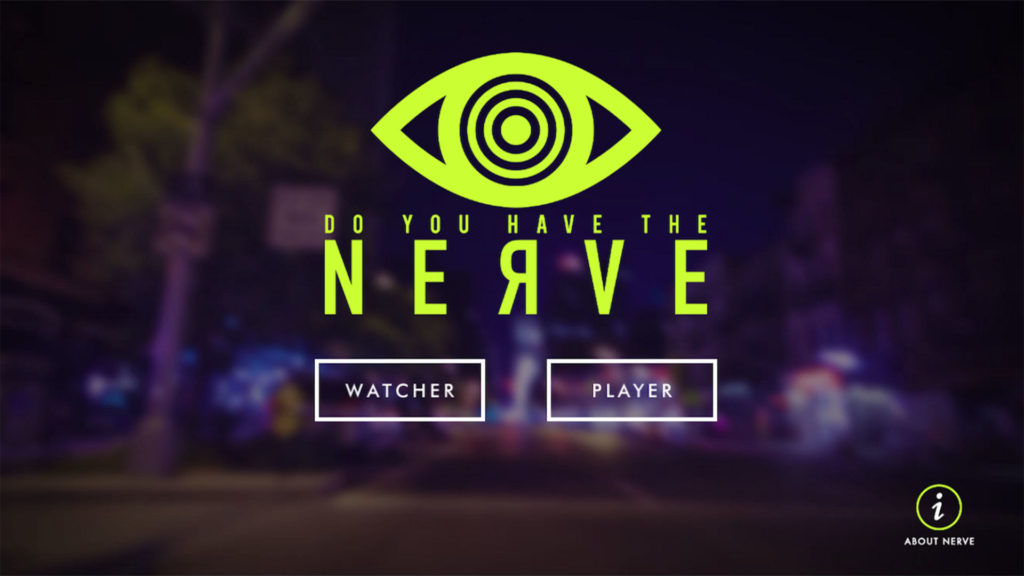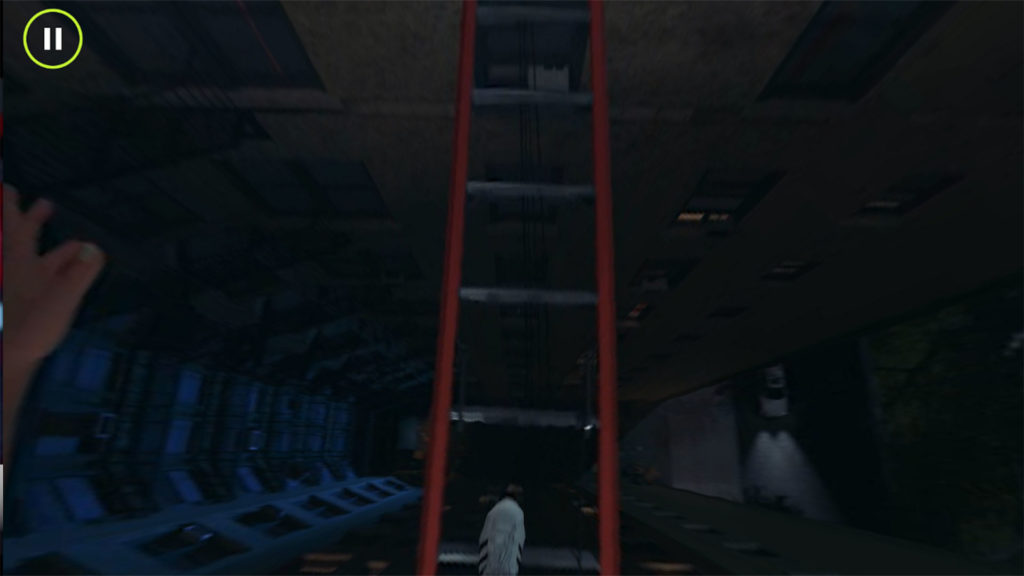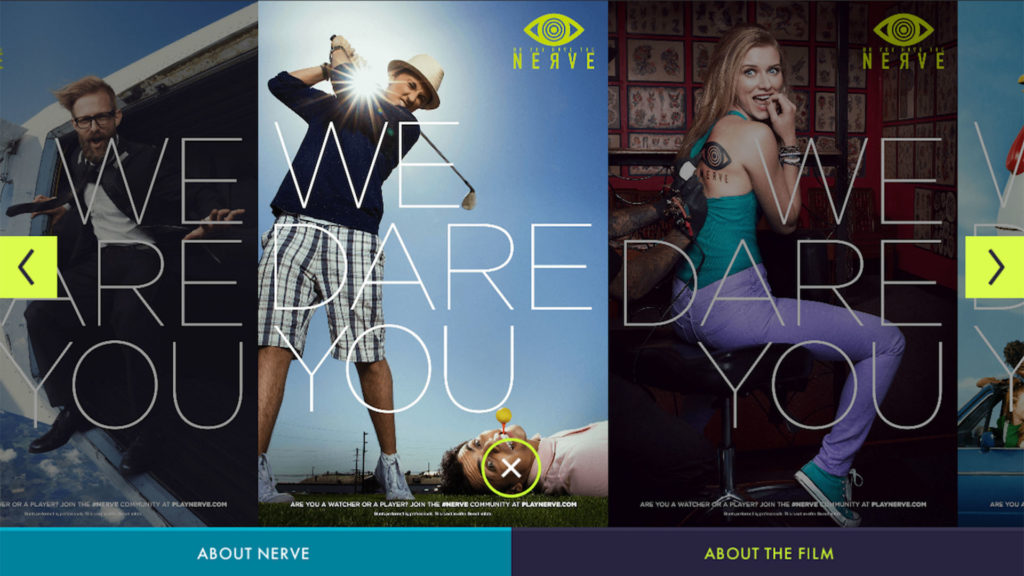In the movie Nerve, which stars Emma Roberts and Dave Franco, participants are put into one of two categories: Watchers or Players. Players participate in a series of ever more daring and stunts while the growing audience of Watchers follow along. While Nerve is great as a summer movie thriller, it also happens to be perfect for a VR app experience.
Lionsgate Entertainment partnered with SilVR Thread to develop Nerve – Do You Dare, a promotional virtual reality app that can be experienced on mobile platforms such as Google Cardboard and the Samsung Gear VR. Similar to the film, users can choose to be either Watchers or Players. Watchers are offered a collection of videos where characters perform dares such as eating crickets. However, the app’s biggest draw is in its virtual reality scenarios available to Players. These experiences, recreated using scenes from the movie, range from walking across an aluminum ladder bridge across two buildings or riding a skateboard while hanging on to a rope tied to a police car. In short, the app provides all the thrills of being in Nerve without the risks to life or limb.

David Edwards, vice president of digital marketing at Lionsgate Entertainment, and Tai Crosby, founder and CEO of SilVR Thread, talk to [a]listdaily about putting together the promotion and how VR gets audiences to theaters.
How did the partnership to create virtual reality experience featuring Nerve come together, and how did Lionsgate work with SilVR to create the app?
Crosby: When we first met with Lionsgate, it was immediately evident that this was the perfect technology for this project. SilVR Thread could deliver for Lionsgate a true first-person POV (point-of-view) immersion to align with a film that has you on the edge of your seat. Lionsgate drove app development while SilVR Thread focused on creating VR experiences that made users feel they were part of the film.
What made Nerve the ideal movie for this kind of project?
Edwards: Nerve is about how social media and mobile tech impacts our world, as “Players” and “Watchers” engage in a high-stakes online game of truth or dare. The immersive environment you get with VR provides an incredible opportunity for us to let the audience actually experience for themselves the thrill of the high-risk dares from the movie. Plus, the filmmakers were enthusiastic about using VR for promotion and offered extensive production support.
Crosby: Nerve features spine-chilling action dares, and the best way to highlight them is to allow fans to experience the dares not only as they were presented in the scene, but more specifically through the shoes of the action star. SilVR Thread POV VR lets users live out the scene within the body of the star, creating a deeper connection so it that feels very real, and it doesn’t get much more adrenaline pumping than Nerve. We love the concept of the film and had a blast working with the Lionsgate team.
What are some of the dares audiences can look forward to?
Crosby: Our most popular dare has been skateboarding while roped to the back of a moving cop car. The other two thrilling dares are ones where the characters cross a ladder suspended between two windows sills of high-rise NYC apartment buildings—in one of the dares, the character succeeds, and in the other, the character fails. It’s pretty intense and fun to experience with a full 360 perspective.

How do you feel VR helps get audiences to theaters?
Edwards: Ultimately, the Nerve VR experience drives awareness and interest in the film.
Crosby: As VR gradually enters the mainstream, it is proving itself to be a tremendous compliment to traditional film. No other medium allows fans to experience fictional worlds in the same way. Fans are getting immersed as if they were there—and in this particular case, getting to experience moments from the film through the shoes of their favorite star.
Will Lionsgate develop VR experiences to promote all its movies in the future?
Edwards: This is our fourth promotional VR experience for a film release. We find them to be very effective when there is a strong thematic alliance that lends itself organically to VR, which is the case with Nerve.
With both mobile VR and premium headsets out, what do you see as the future of VR technology?
Crosby: VR headsets are bound to become significantly sleeker, less bulky, and more naturally fit for our faces. But just as hardware advancements will play a significant role in encouraging participation in the medium, fantastic content is critical in facilitating that push.
Do you think that, with Google Daydream coming out this year, an experience like this could become even more interactive?
Crosby: It certainly offers to bring some new features and opportunities to this space once it’s available. But right now, we’re focused on working with our content partners to bring our work to Gear VR, Oculus Rift and HTC Vive.
What is the most challenging part of putting together a VR promotion such as this one?
Edwards: While VR is still in nascent stages, it’s becoming more accessible every day. We worked closely with our VR developer and our filmmakers to produce high-quality, stereoscopic 360 content. Headsets are also becoming more prevalent, so to ensure that we could provide the Nerve VR experience to as many people as possible, we turned to Google Cardboard and we utilized 360-degree video playback on Facebook and YouTube.
Crosby: When you are working alongside a blockbuster film production like this, there are so many pieces that are coming together at the same time, so that kept us on our toes. And we wanted the VR experience to be really seamless with just the right imagery from the film.


